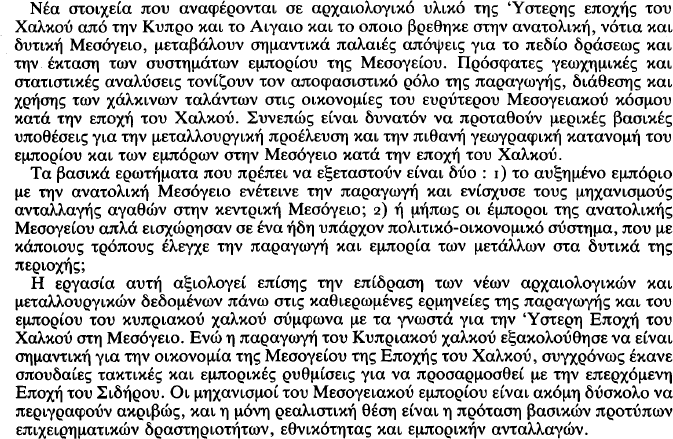New data on Late Bronze Age Cypriot and Aegean material found in the eastern, southern, and central Mediterranean significantly alter timeworn concepts about the scope and extent of Mediterranean trade systems. Recent geochemical and statistical analyses highlight the pivotal role played by the production, distribution, and consumption of copper oxhide ingots in the Bronze Age economies of the wider Mediterranean world. As a consequence, it is possible to propose some basic hypotheses on metallurgical origins, and on the possible orientation of Mediterranean Bronze Age trade and traders.
Two basic issues are involved: 1) did increased trade with the eastern Mediterranean stimulate production and intensify exchange mechanisms in the central Mediterranean? 2) or did eastern Mediterranean traders simply plug into an existing politico-economic system that somehow monitored metals' production and exchange further west?
This paper also evaluates the impact of new archaeological and metallurgical data on traditional interpretations of Cypriot copper production and exchange in its Late Bronze Age Mediterranean context. Whilst Cypriot copper production remained important to the economy of the Bronze Age Mediterranean, it also made key tactical and commercial adjustments to the coming Age of Iron. Mechanisms of Mediterranean trade are still difficult to pin down, and it is unrealistic to do more than propose basic models of entrepreneurship, ethnicity, and exchange.
